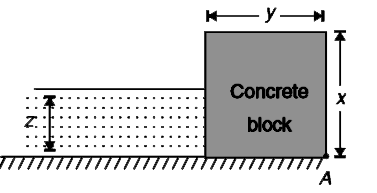“A fish dies when taken out of water whereas a wall lizard will die if kept under water.” Mention the term used to describe such abilities that allow fish and lizard to survive in their respective habitats.
Step by step video & image solution for “A fish dies when taken out of water whereas a wall lizard will die if kept under water.” Mention the term used to describe such abilities that allow fish and lizard to survive in their respective habitats. by Biology experts to help you in doubts & scoring excellent marks in Class 7 exams.
Related Playlists
- BOOK - NCERT EXEMPLARCHAPTER - WEATHER, CLIMATE AND ADAPTATION OF ANIMALS TO CLIMATE EXERCISE - VERY SHORT ANSWER QUESTIONS (TRUE OR FALSE)4videos
WEATHER, CLIMATE AND ADAPTATION OF ANIMALS TO CLIMATE
- BOOK - NCERT EXEMPLARCHAPTER - WEATHER, CLIMATE AND ADAPTATION OF ANIMALS TO CLIMATE EXERCISE - SHORT ANSWER QUESTIONS6videos
WEATHER, CLIMATE AND ADAPTATION OF ANIMALS TO CLIMATE
- BOOK - NCERT EXEMPLARCHAPTER - WEATHER, CLIMATE AND ADAPTATION OF ANIMALS TO CLIMATE EXERCISE - LONG ANSWER QUESTIONS (FILL IN THE BLANKS IN THE PARAGRAPH)1videos
WEATHER, CLIMATE AND ADAPTATION OF ANIMALS TO CLIMATE
- BOOK - NCERT EXEMPLARCHAPTER - WASTEWATER STORYEXERCISE - LONG ANSWER QUESTIONS5videos
WASTEWATER STORY
Similar Practice Problems
- Question 1 - Select One
If a fish like Rohu is taken out of water it will soon die, because
Ait cannot breathe as its gills get stuck upBof very rapid evaporation from its skinCits body gets heated upDthere is too much oxygen in atmospheric air as compared to that dissolved in water - Question 1 - Select One
What is the term used to describe the process in which water from a swollen raisin comes out when
AendosmosisBexosmosisCActive transportDReverse osmosis - Question 1 - Select One
Read the following passages carefully and choose the most appropriate answers to the questions out of the four alternatives.
Riparian vegetation [the green band of vegetation along a water course] can help stabilize stream banks, filter sediment from surface runoff, and provide wildlife habitat, livestock forage, and scenic value. Well-developed vegetation also allows bank soils to absorb extra water during spring runoff, releasing it later during drier months, thus improving late-summer stream flows. In many parts of the arid West, trees and shrubs are found only in riparian areas. Woody plants are very important as winter cover- for many wildlife species, including upland game birds such as pleasants and turkeys. Often this winter cover is the greatest single factor limiting game bird populations. Woody vegetation also provides hiding cover and browse for many other species of birds and mammals, both game and nongame. Dead trees ("snags") are an integral part of streamside habitats and should be left standing whenever possible.Woodpeckers, nuthatches, brown creepers, and other birds eat the insects that decompose the wood. These insects usually pose no threat to nearby living trees. Occasionally a disease organism or misuse of pesticides will weaken or kill a stand of trees. If several trees in a small area begin to die, contact your local extension agent immediately.
What is the overall sense conveyed by the author when the specific birds that live in riparian areas are listed in the passage?AUrgency on behalf of endangered speciesBThe rich and varied life in such areasCHis or her own importance as a scientific expertDPoetic wander - Question 1 - Select One
The beaver had made a dam about hundred yards long, and it had formed out of the quickly flowing stream, a wide stretch of water about twelve feet deep. The dam was so firm and broad that it was easy for me to walk along it. After a hundred and fifty yards I came to a 'beaver's castle'- a great heap of logs skilfully fitted together, the lower part covered with earth and plants. The upper logs were put loosely together so that the air could pass through to the interior.
In the late autumn, before land and water are covered with snow and ice, the beaver has to make its dwelling frostproof. It collects young trees and gnaws the stems in a double cone until the tree falls.Then the long stems are gnawed into small sections, the thin twigs bitten off and the logs are dragged to the dwelling. There, the timber is piled on the castle, sometimes to a height of ten or twelve feet. Mud is brought up from the bottom of the lake and packed between the logs with the animal's clever forepaws. The interior is lined with the finest wood shavings. In this tall shelter, the beaver remains high and dry, and protected from frost throughout the winter.
The only access to the dwelling is under the water, and even the forest wolves are not able to pull the firm building apart. The water is the beaver's element. On land it moves slowly and awkwardly. Thus, it is vital for the beaver to have water in which it can swim, and where nature
has not provided this condition for it, it creates it with its dam.
The beaver's activities can change whole landscapes. With this dam, for instance, on which I was standing, beavers had turned a whole wooded alley into a lake, trees that stood there ha been killed by the water and had disappeared. Aquatic game had settled there. Ducks swam past us, and great must have been the number of fish, as swarms of trout had swum past me in the clear stream. Wide stretches of meadow had come into existence on the banks, with flat landing places to which the well-beaten beaver tracks led. Many years of building, gnawing and dragging must have gone into the completion of this immense task, creating a new region for the beaver to live in.
What evidence in the passage suggests that beavers build strong dwellings ?AThe beaver's dwelling is frostproof.BIt takes many years of hard work to build the dwelling.CEven the forest wolves cannot pull the dwelling apart.DThe interior is lined with finest wood shavings.
Similar Questions
Why do fishes die when taken out of water ?
View SolutionWhy do fishes die when taken out of water?
View SolutionWhy do fishes die when taken out of water?
View SolutionAn organism X having breathing organs A lives on land. When organism X goes under water, it cannot survive for a long time unless carrying an oxygen cylinder. On the other hand, the organism Y having breathing organs B always lives in water and if taken out of water, it dies after a short while. A third organism Z having breathing orgains C and D which lives on the banks of ponds, lakes and rivers can survive on land as well as in water equally well.
(a) What could organism X be? Name the breathing organs A.
(b) What could organism Y be? Name the breathing orgains B.
(c) What could organism Z be ? Name the breathing organs C and D
(d) Out of X, Y and Z, which organism is (i) amphibian, (ii) aquatic, and (iii) terrestrial ?View Solution(i) A non uniform cube of side length a is kept inside a container as shown in the figure. The average density of the material of the cube is 2 ρ where ρ is the density of water. Water is gradually fille din the container. It is observed that the cube begins to topple, about its edge into the plane of the figure passing through pointA, when the height of the water in the container becomes a2. Find the distance of the centre of mass of the cube from the face AB of the cube. Assume that water seeps under the cube.

(ii) A rectangular concrete block (specific gravity =2.5) is used as a retatining wall in a reservoir of water. The height and width of the block are x and y respectively the height of water in the reservoir is z=34x. the concrete block cannot slide on the horizontal base but can rotate about an axis perpendicular to the plane of the figure and passing through point A

(a) Calculate the minimum value of the ratio yx for which the block will not begin to overturn about A.
(b) Redo the above problem for the case when there is a seepage and a thin film of water is present under the block. Assume that a seal at A prevents the water from flowing out underneath the block.View SolutionRead the following extract and answer the questions given below :
One afternoon in 1977 , as his parents and two brothers fished in the Gulf of Mexico, 12-year-old Michael
Dell sat on the beach , panishtakingly putting together a
trotline - a maze of ropes to which several fish hooks
could be attached . " You 're wasting your time, " the rest of
the family called to Micheal , as they pulled in fish " Grab a
pole and join in the fun . "
Michael kept working . It was dinner time when he
finished , and everyone else was ready to call it a day . Still,
the youngester cast the trotline far into the water , anchoring
it to s stick that he plunged deep in the sand ,
Over dinner his family teased young Michael about
coming away empty-handed. But afterwards Michael
reeled in his trotline , and on the hooks were more fish then
the others had caught all together !
Micheal Dell alwauys been found of saying, " If you
think you have a good idea , try ir !" And today , at 29 he
has discovered the power of another good idea that has
helped him rise in just a few years from teen to tycoon . He
has becomes the fourth-largest manufacturer of personela
computers in America nad the youngest man ever to head a
Fortune 500 corporation
(ii) Michael Dell sat on the beach.
(Rewrite it using past perfect continuous tense )View Solution

